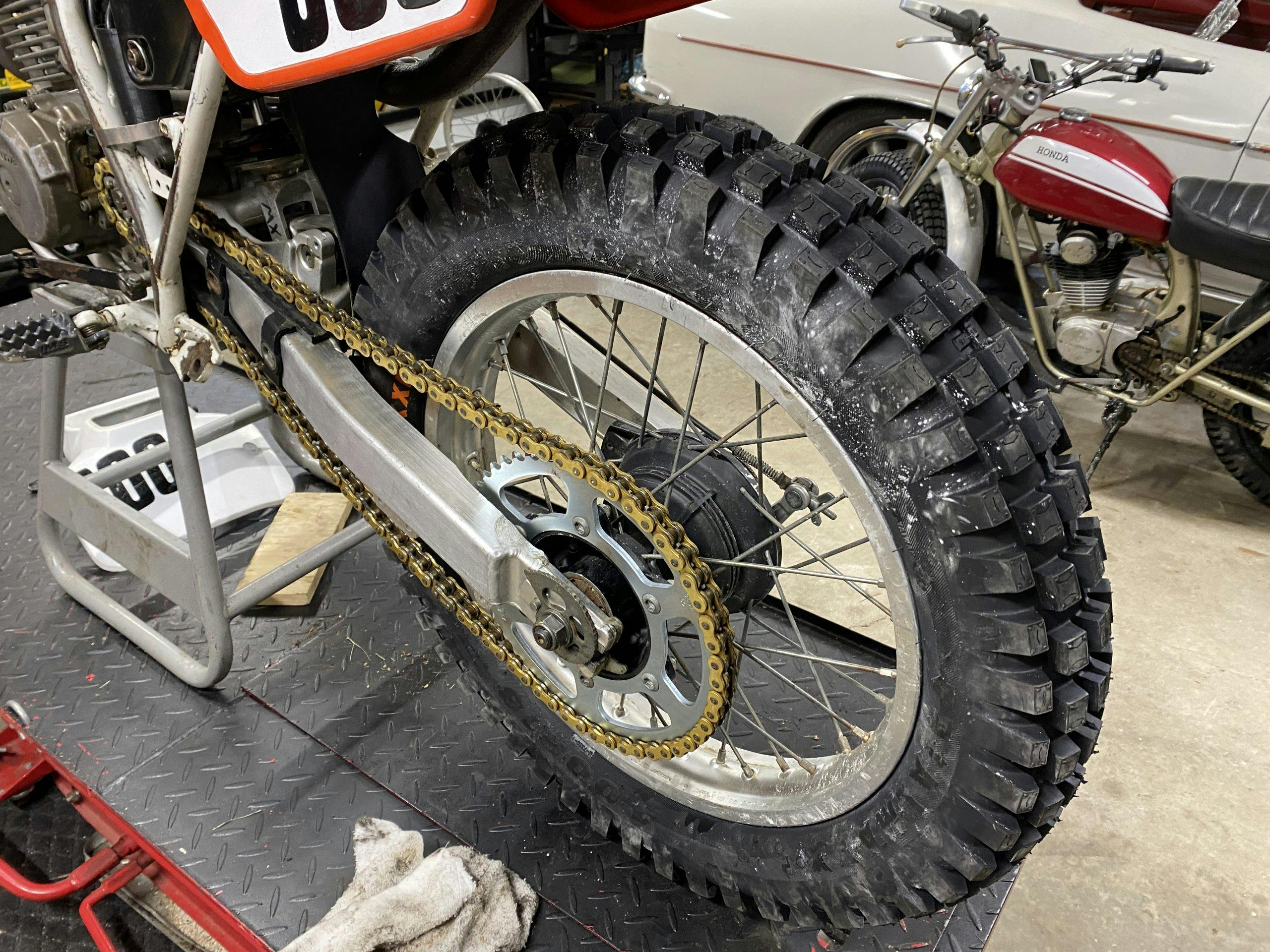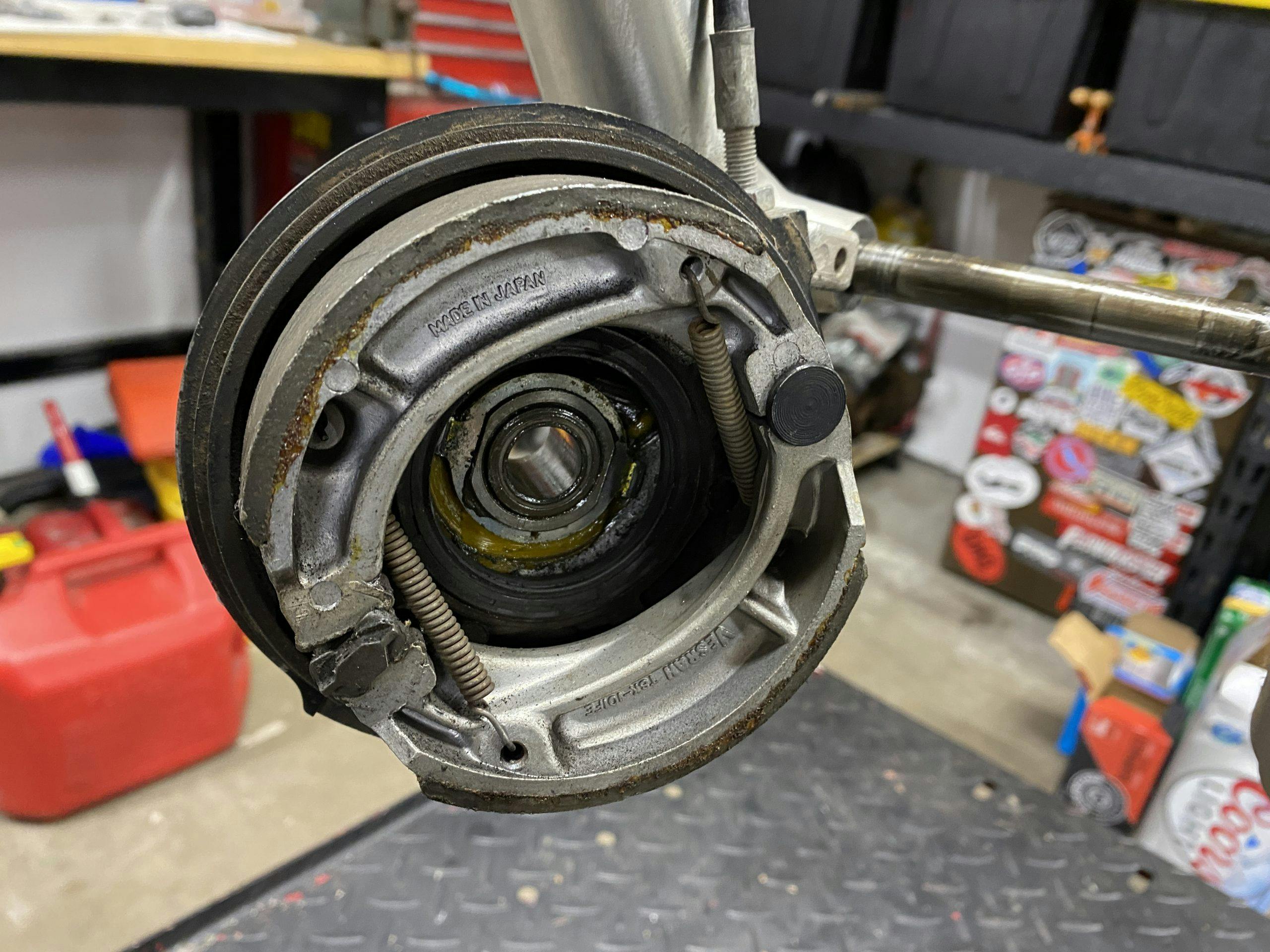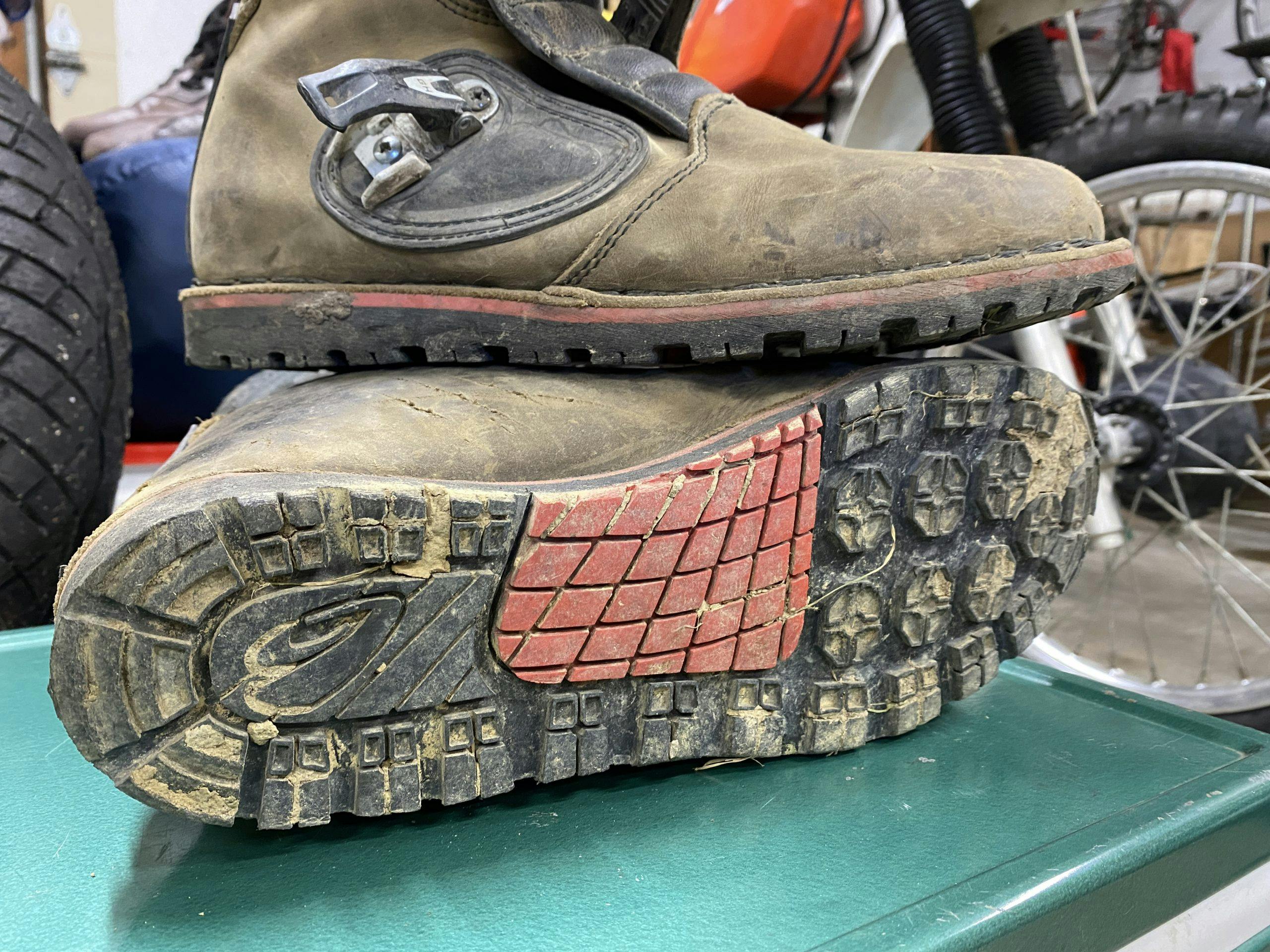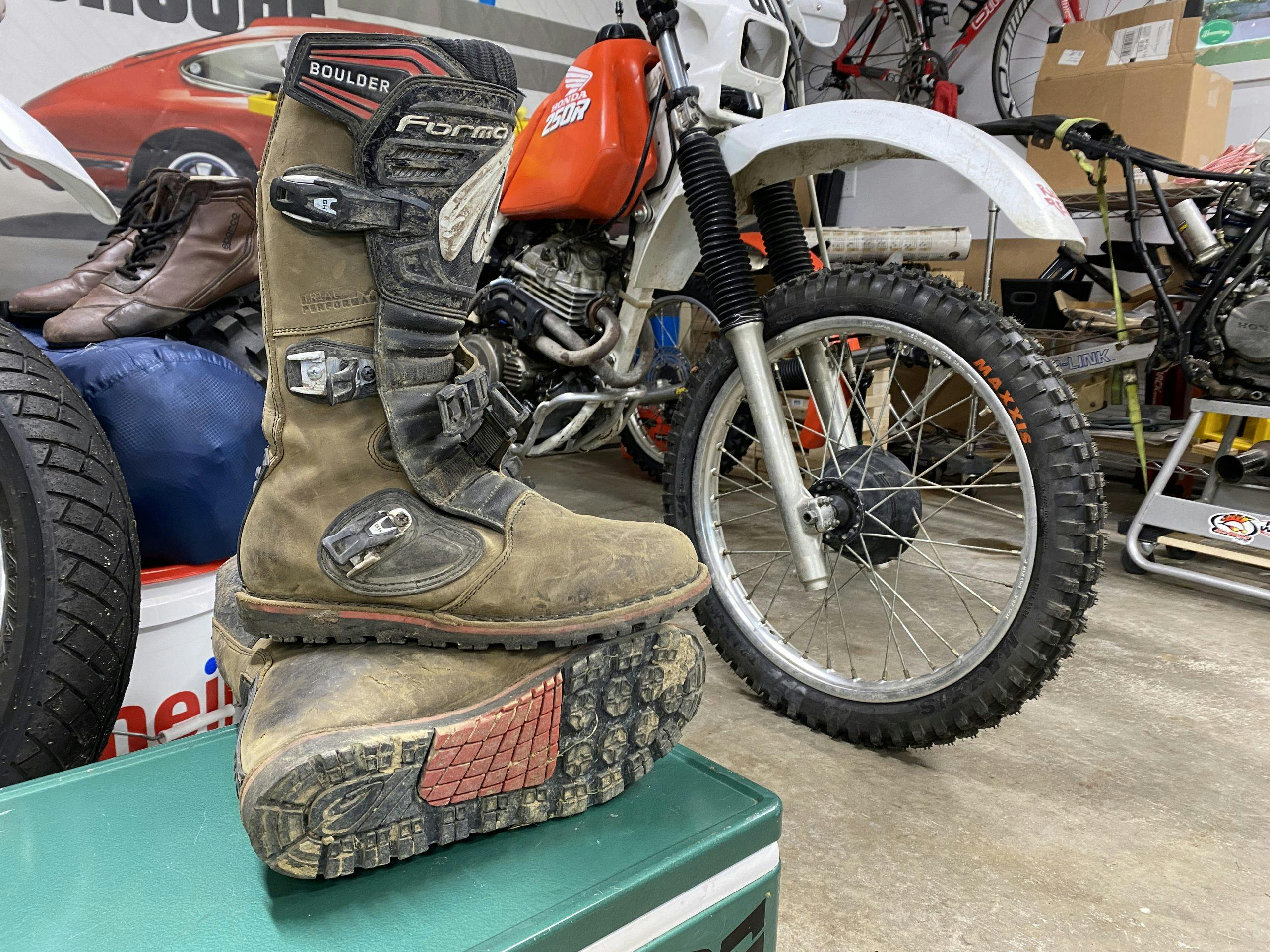Six Ways to Sunday: Trials of miles and motorcycles
In a previous life I subjected myself to many physical challenges. John L. Parker, Jr. put it best in Once a Runner, his Florida-based work of fiction about Quenton Cassidy, a character who subjected himself to “miles of trials and trials of miles.” I know Quenton is fictional because he logged big miles on foot in the name of speed for many years and, at the end of his running career, was left with only an emotional crisis. No mention of the bad back, hips, and knees that myself and my teammates experienced after we graduated and entered the real world, where our ability to run quickly for a long time was nothing more than a party trick or conversational ice-breaker.
Now the term “trials” no longer refers to these breathless cross-county jaunts and timed attempts to circle a Tartan track. Instead it has come to reference a peaceful, artful dance conducted between rider and machine. Motorcycle trials is a slow-speed event and one that has always been a curiosity for me. Naturally, I had to work it into the Six Ways to Sunday schedule. The Honda XR250R I am astride for the project is wildly unsuited for trials competition, but its idiosyncrasies haven’t stopped me from trying the other disciplines. Let’s take a look at why the XR is horrible for this particular outing, and what I am doing to try and make it less bad.
Speed matters

Trials is strictly a low-speed affair, often sub-walking pace. Clutch engaged, bike idling along slowly. The goal is to traverse a tricky section of trail without putting one or both of your feet on the ground to stabilize yourself. Ideally, a trials bike is generous on low-end torque and geared for crawling. My XR250 is geared for enduro-type events from the factory and thus does not bumble along at moderate speeds. Luckily, a solution is fairly simple.
The final-drive gearing is a couple of steel sprockets, and I adjusted it for the motard event I did back in August. This time I am swapping out both front and rear to bring down the bike’s top speed. The stock 13-tooth front and 48-tooth rear are getting tossed into the spares bin in favor of a 12/50 combination. This change means that for each rotation of the countershaft (the transmission output shaft) the rear wheel will turn ever so slightly less than before. Purpose-built trials machines have much more extreme gearing, but this is the lowest countershaft and highest rear-sprocket combination I could find without going full-custom.
Traction
Trials tires must be fitted before I can take part in competition, but the swap would be in my best interests even if it weren’t required by regulations. The tread pattern is very different compared to that of most dirt-bike tires since there is less concern for the tread clearing out in muddy conditions. Plus, high-speed stability doesn’t matter. The sidewalls are soft and flexible, so a rider can run low pressures to increase the footprint of the tire and gain a more stable footing. The rubber compound is also extremely soft. I can twist the tall knobs of the tire easily by hand, something that is not possible on a motocross tire.
Suspension and brakes
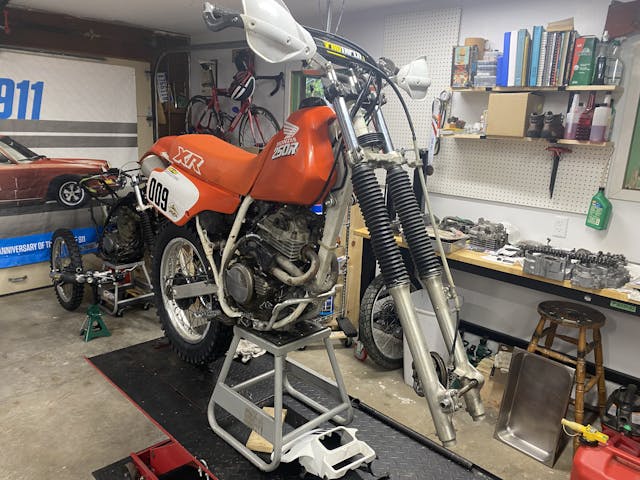
Much like my flat-track adventure, the XR doesn’t perfectly fit the trials rulebook. The biggest discrepancy this time was the front disc brake. The AHRMA rulebook requires any machine competing in trials to have drum brakes both front and rear. This put me in a bit of a pickle, until I looked around my garage and started thinking.
An XR200R followed me home this spring, and I did some quick freshening to make it a good loaner bike and also something I could race in the Post Vintage 200 class at future events. The 200 model in the XR series is a Luddite’s favorite motorcycle: drum brakes, two-valve cylinder head, simple suspension. After some squinting at parts-number comparisons using online diagrams and spending some time with my digital calipers while the 250 was apart, I discovered that the entire XR200 front end would bolt right onto the XR250. The only difference was the steering neck bearings, and using XR250 bearings on the XR200 steering stem easily solved the problem.
Boots
Much like the soft and flexible tires, trials boots are tailored to provide more feel and grip. The only off-road boots I own are trials boots, actually, mainly because I am not a top-tier motocross racer who needs the extreme stiffness and protection of dedicated MX boots. Trials boots are more comfortable to walk in, and their lighter-weight construction makes it easier to modulate rear brake pressure. The relatively soft rubber of the sole also features more tread than racier boots. Boot choice may be a small thing, but I’m hoping all the details can help make me and my machine less of a frustrating spectacle and more of an entertaining sideshow.
With the bike assembled and running as strong as ever, it’s time to load up the big red Express and point its nose south to my favorite motorcycle event: Barber Vintage Festival. It’s roughly 900 miles from my Michigan garage to the paddock that will be home for four days. Will this two-wheeled track event be easier on my back than my college-era meets? I certainly hope so—clearly, I’m addicted to some strange cocktail of crazy and fun that’s common to both. Stay tuned.

